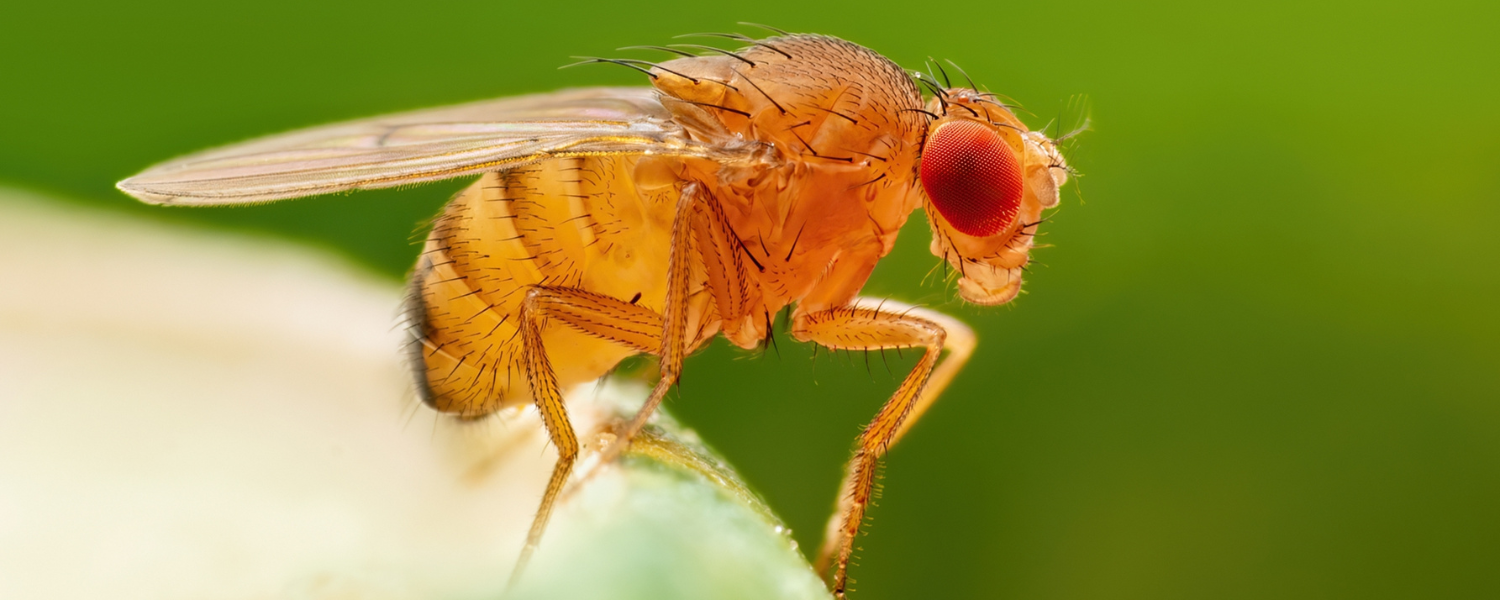A clearer view: How a commonly studied gene impacts more than eye color in fruit fly research
September 4, 2025

Fruit flies (Drosophila melanogaster) are more like us than you might think.
For example, they share 65%–75% of disease-causing genes with humans, making them important models for studying neurodegenerative disorders, cancers, metabolic diseases and more.
“We’re not so different,” said Heidi Lempradl, Ph.D., an assistant professor at Van Andel Institute. “A significant portion of human disease genes have corresponding genes in flies, which is immensely helpful for investigating disease mechanisms and potential treatments.”
In addition to genetic similarities, fruit flies have other characteristics that make them powerful research models. They have a rapid life cycle and produce offspring quickly, which means faster research results. Their relatively simple genetic makeup also gives scientists a straightforward method for exploring fundamental biological processes.
A prime example of the power of fruit flies can be found in the white gene, a commonly used genetic marker in Drosophila research that causes an eye color shift from the flies’ normal red eyes to white. This eye color adjustment allows scientists to differentiate between flies that exhibit a change in a characteristic of interest and those that do not, making comparison between the two groups easy.
Here’s the thing though: the white gene also plays a role in fruit fly metabolism, which raises questions about its impact beyond eye color.
With that in mind, Lempradl and her team set out to answer a question that could help scientists design better studies in the future: does changing the white gene have other effects?
The answer, it turns out, is “yes.”
More than meets the eye
The white gene belongs to a family of metabolism-related genes present in virtually all organisms. In fruit flies, it enables transport of metabolites produced during food digestion. These metabolites are precursors for eye color pigments in the flies. When the white gene is changed, the metabolite doesn’t get transported and red eye pigmentation doesn’t get made, resulting in a white hue.
That metabolite transfer also plays a role in the metabolism of tryptophan, an essential amino acid used to make the neurotransmitters melatonin and serotonin, which regulate mood, sleep and appetite.
Tryptophan is part of a complex chemical network called the kynurenine pathway. This molecular network helps regulate inflammation, the body’s response to infection or injury.
When the function of the white gene is disrupted, the transport of these crucial metabolites also is affected — and that could have implications that reach beyond eye color into metabolism and behavior.
A clearer view
To answer their question, Lempradl and her team created white-eyed and red-eyed flies with the same genetic background — with one exception: The white-eyed flies had a mutation in the white gene. The team then conducted common behavioral and metabolic tests. Because the two groups of flies were the same in every other way, differences could be attributed to the change in the white gene.
Their findings, recently published in the journal Genetics, revealed that the white gene may slightly alter some metabolic functions and behavior in flies — and these alterations may affect research results. For example, Lempradl and her team found that the red-eyed flies were more active and better climbers than white-eyed flies, despite having the same genetic background. Fruit flies are models for studying movement disorders such as Parkinson’s, so understanding the exact reasons for behavior shifts is important.
According to Lempradl, the big takeaway for researchers is a reminder to consider possible unexpected effects of the white gene and other markers.
“We want to help improve the field and make discoveries more robust,” Lempradl said. “I’m hoping our results reframe how we use fruit fly models and emphasize the need to control for genetic background in Drosophila research.”
Research reported in this publication was supported by Van Andel Institute.

